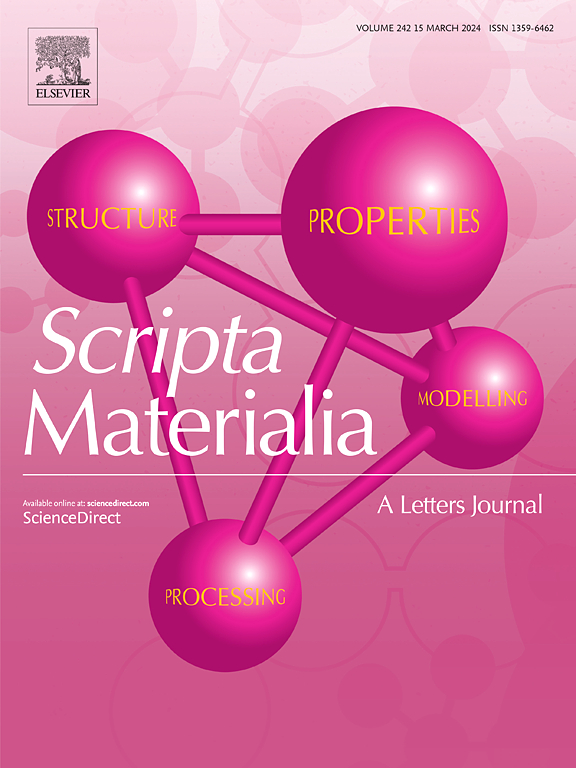Hardness anisotropy in Mg: The influence of extension twining and 〈c + a〉 dislocation activity under nanoindentations
IF 5.6
2区 材料科学
Q2 MATERIALS SCIENCE, MULTIDISCIPLINARY
引用次数: 0
Abstract
Nanoindentation was performed on individual grains of a polycrystalline Mg sample with c-axis declination angles ranging from parallel (0°) to perpendicular (90°) to the c-axis. Hardness was highest at ∼0°, decreased up to ∼55°, and then increased at ∼90° to an intermediate level. At ∼0°, high-density 〈c + a〉 dislocations extended deep into the crystal, contributing to high hardness. At ∼55°, 〈c + a〉 dislocations were confined near the indent, and occasional extension twinning reoriented the crystal to ∼45°, promoting 〈a〉 slip in both matrix and twin, leading to low hardness. At ∼90°, extension twinning reoriented the crystal to ∼0°, inducing texture hardening and intermediate hardness. Despite the complex stress state in nanoindentation, which fundamentally differs from the uniaxial stress in bulk tensile and compression tests, the combined contributions of dislocation and twinning still give rise to measurable hardness anisotropy, suggesting nanoindentation as a high-throughput technique for probing orientation-dependent mechanical behavior in Mg.

Mg的硬度各向异性:纳米压痕下扩展缠绕和< c + a >位错活度的影响
在多晶Mg样品的c轴偏角范围从平行(0°)到垂直(90°)之间进行纳米压痕。硬度在~ 0°时最高,下降到~ 55°,然后在~ 90°时增加到中间水平。在~ 0°时,高密度的< c + a >位错延伸到晶体深处,有助于提高硬度。在~ 55°处,< c + a >位错被限制在压痕附近,偶尔的延伸孪晶将晶体定向到~ 45°,在基体和孪晶中促进< >滑移,导致硬度降低。在~ 90°处,延伸孪晶将晶体定向到~ 0°,导致织构硬化和中等硬度。尽管纳米压痕中的复杂应力状态与体拉伸和压缩试验中的单轴应力有本质区别,但位错和孪晶的共同作用仍然会产生可测量的硬度各向异性,这表明纳米压痕是一种高通量技术,用于探测Mg中取向相关的力学行为。
本文章由计算机程序翻译,如有差异,请以英文原文为准。
求助全文
约1分钟内获得全文
求助全文
来源期刊

Scripta Materialia
工程技术-材料科学:综合
CiteScore
11.40
自引率
5.00%
发文量
581
审稿时长
34 days
期刊介绍:
Scripta Materialia is a LETTERS journal of Acta Materialia, providing a forum for the rapid publication of short communications on the relationship between the structure and the properties of inorganic materials. The emphasis is on originality rather than incremental research. Short reports on the development of materials with novel or substantially improved properties are also welcomed. Emphasis is on either the functional or mechanical behavior of metals, ceramics and semiconductors at all length scales.
 求助内容:
求助内容: 应助结果提醒方式:
应助结果提醒方式:


